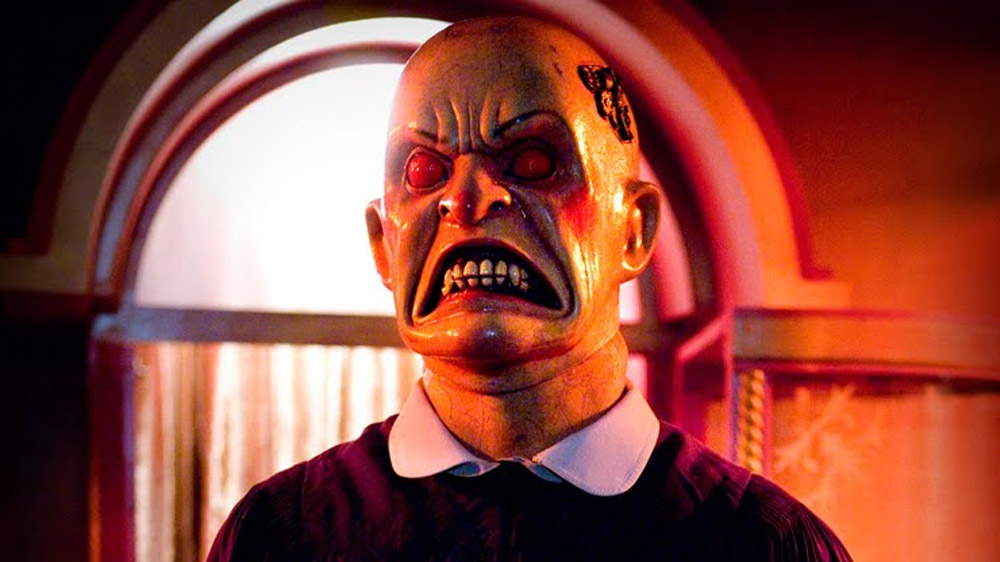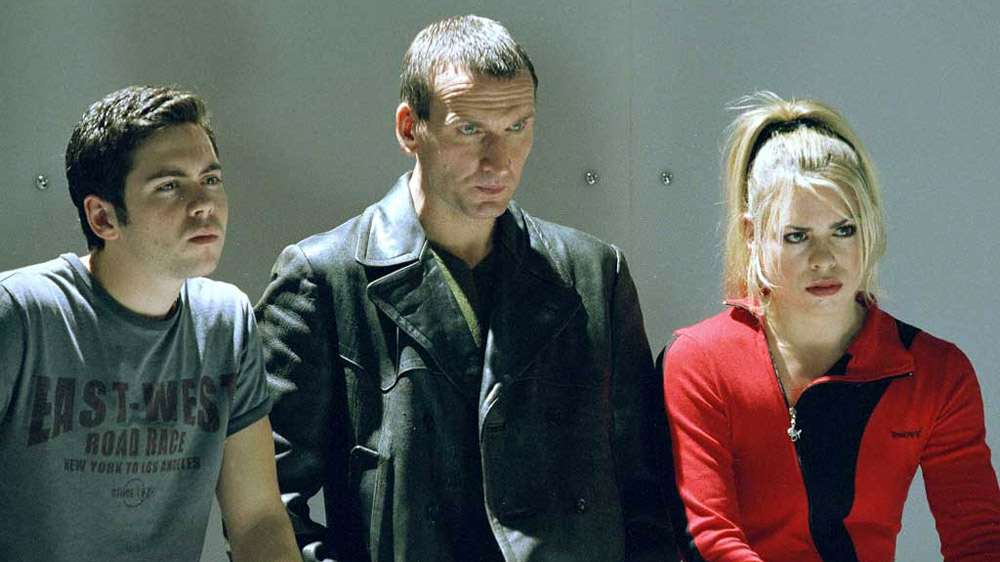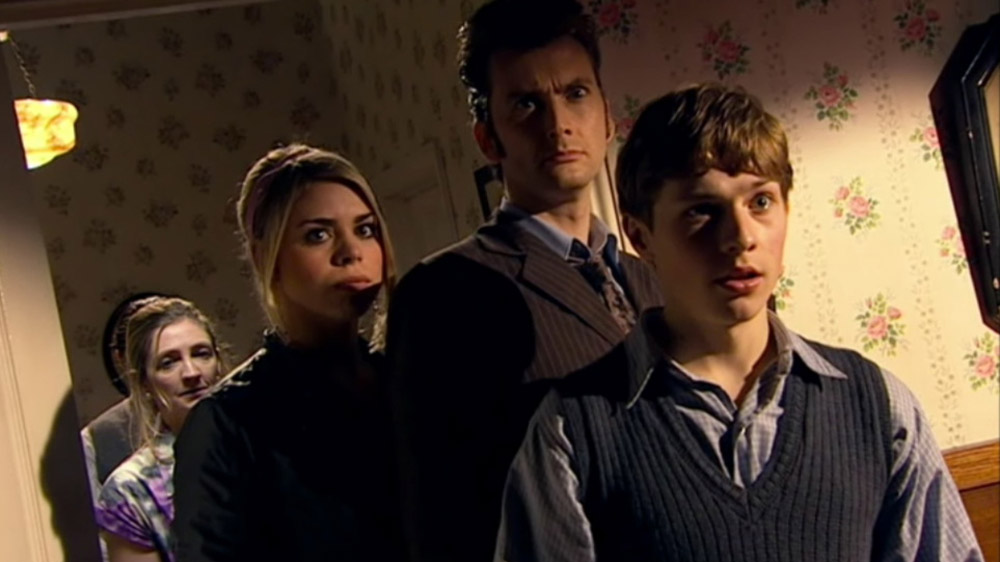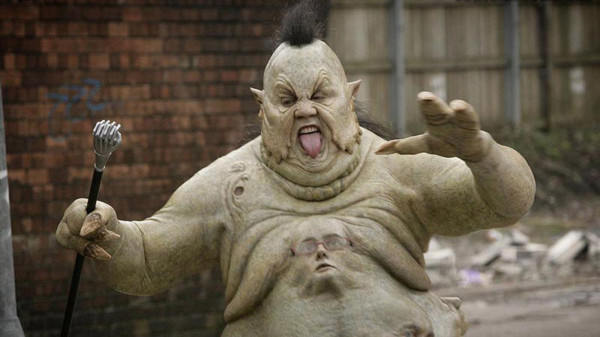Not every episode of Doctor Who can be a universally-adored ‘Blink’ or ‘The Doctor’s Wife’.
We’ve picked out four episodes that don’t get the recognition they perhaps deserve…
4. ‘The Beast Below’

A story of images and ideas, Matt Smith’s second story doesn’t quite coalesce as an adventure. It’s hard to grasp quite how this society works, when too many extras wander across the back of shot, looking like they’re in period fancy dress. There in the bowler hat is Mr Benn. There in the donkey jacket is Del Boy. And there in the hat is the flower seller from Trumpton.
But if you stop trying to work out the geography, and the social gradations, of Starship UK, there is a lot to enjoy. The central market set channels a great ‘Keep Calm and Carry On’ vibe, while the CGI work is genuinely beautiful: from the opening shot of Amy floating in space to the final reveal of the star whale underneath the ship.
When first screened, this story was another indication that the camerawork and design of Moffat’s Who had cinematic aspirations.
3. ‘The Long Game’

Poor unloved ‘The Long Game’; the poor relation in Series 1. And yet, watching it again now, it’s a reminder of the gorgeous thrill that revamped first year was: when the Fourth Great and Bountiful Human Empire was realised as a slice of 2000 AD-style fantasy.
Like the Jagrafess, this story has bite. Its targets aren’t small or subtle, but in these days of discredited media moguls, economic collapse and the Leveson Enquiry, they seem especially pertinent.
Simon Pegg’s venal Editor is representative for a consortium of banks, while Davies didn’t need to throw a foam pie to humiliate Rupert Murdoch: he incarnates him as a giant inflated pink condom with teeth.
The politics of the workplace is everywhere in this story. The Editor remarks, in one of its best lines, ‘We all know what happens to nonentities. They get promoted’, and when Cathaca kicks back against the system, she’s as much motivated by having been looked over for promotion as she is by anti-capitalist outrage.
Certainly, the story isn’t perfect: there are the first signs here of how mutually exclusive and self-satisfied the Doctor and Rose would become on their worst days. But it is artfully directed and has such an eye for colour and light, making clever use of its redressed sets, you wonder why director Brian Grant never returned to the show.
2. ‘The Idiot’s Lantern’

An accomplished slice of television, made by people who absolutely know what they’re doing, we’d offer the controversial suggestion that, slightly sloppy ending aside, ‘The Idiot’s Lantern’ is some of writer Mark Gatiss’s best work for the series yet.
Gatiss’s love of the early years of television is all over the story: Florizel Street is name-checked in a story which is itself about a Street on Coronation Day. Muffin the Mule gets his second cameo appearance in Doctor Who after his trot-on part in 1999 sketch, The Pitch of Fear. (‘Yes, Muffin. I’m sorry too.’)
Meanwhile the catchphrases of Fifties television are deployed to break fourth walls and mark the structural beats of the narrative. ‘Are you sitting comfortably?’, asks The Wire at the beginning, while, bang on the halfway mark, Rose’s face gets sucked off to the cry of ‘Goodnight children, everywhere’.
Knowing nods and winks are everywhere, but it doesn’t feel clever-clever: it just feels like layered writing. When Eddie Connolly mocks his wife for getting her hair done to watch the ceremony, because ‘The Queen won’t be able to see you’, it’s a historically-authentic detail and character touch; but the joke’s on Eddie, because in this story: the television can see you. The television talks back.
All this, and there are great, great gags. The Doctor knows his police interrogator’s name because ‘It’s written inside your collar. Bless your mum’, and a whole history of wrongness is implied when Rose reveals, ‘Mum went out with a sailor.’ All in all, it’s enough to leave you ‘Huuuuungrrrryy!’ for more.
1. ‘Love & Monsters’

‘Love & Monsters’ is a beautiful episode. Really. Those who hate it do so because it’s a mash-up of risqué dialogue, soap opera situations, B-movie space frolics and Bella Emberg.
Those who love it, however, do so because of what it says about loneliness, companionship and the abilities of people – even especially lonely or socially awkward people – to form their own urban families, and, through that, a connection with something bigger: something ‘so much darker. And so much madder. And so much better.’
As for that joke: yes, it’s tonally misjudged. But it sits in the context of an episode which is deliberately playing with tone. The sight of Ursula’s head on a paving slab is an image which channels the darkly subversive spirit of a Roald Dahl, or, more pertinently, given that the face belongs to cinema’s Moaning Myrtle, the playful irreverence of a J.K.Rowling. It’s grotesque; but the punchline is not ironic, and the soliloquy which follows is one of the most tender in all of Doctor Who.
Years before Moffat adopted the phrase, ‘dark fairy tale’, Russell T Davies was proving that the show could explore such territory. And like all fairy tales, this one stares down the grotesque with a simple humanity.
What’s your favourite underrated episode of Doctor Who? Let us know below…

